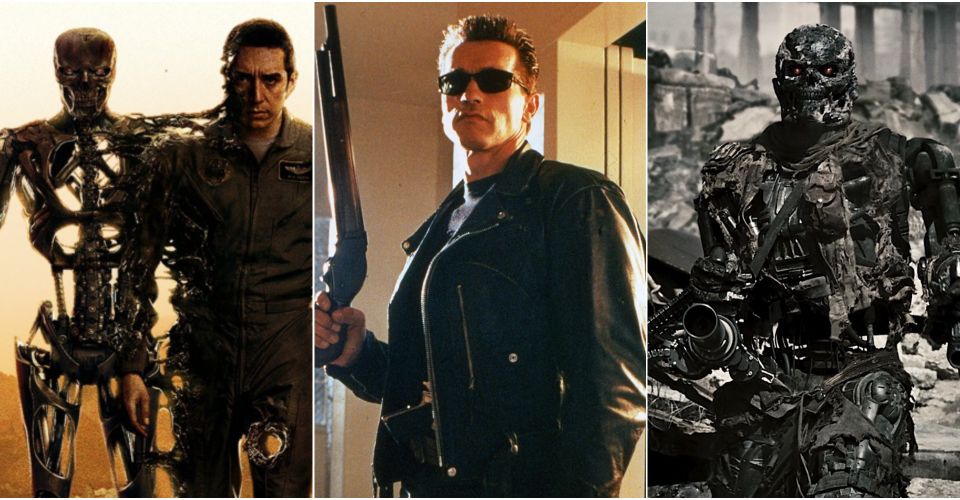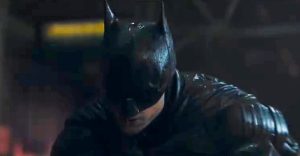The Terminator Movies Need Less (Not More) New Terminator Models

Each new Terminator movie brings with it a new spin on the titular android assassin, but very few have matched the impact of Arnold Schwarzenegger’s iconic original T-800. There are a lot of recurring motifs throughout the Terminator franchise. Each Terminator movie features a crawling Terminator, for example, as a nod to one of the pieces of concept art that director James Cameron used to pitch the original movie.
Most of the movies also feature some variation on the phrase “come with me if you want to live,” another nostalgic reference for fans of the franchise, and most of the recent Terminator movies also feature a scene of series protagonist John Connor being killed off in one timeline or another. However, one trend that has only held back the Terminator sequels is their insistence on introducing new models with each new movie. While well-intentioned, this “bigger is better” mindset is holding back the potential of a series that has always thrived in simplicity.
Every movie in the Terminator series has introduced new Terminator models, but ever since 2003’s Terminator 3: Rise of the Machines this storytelling impulse has proven misguided. Only the franchise’s first sequel, Terminator 2: Judgment Day, managed to make the new model twist compelling, while most of the Terminator models that followed have actively detracted from each sequel’s appeal. While the original movie worked as a simple chase narrative and the second one improved on this idea by pitting one Terminator against another, each subsequent sequel has been so busy making new Terminator models that the movies have forgotten to tell a compelling (or, in some cases, even comprehensible) story.
Why Terminator 2’s New Model Worked

Introduced in Terminator 2: Judgement Day, the T-1000 is an undeniably memorable villain and Robert Patrick’s icy performance makes the character almost as iconic as the original T-800. However, that’s not why the villain works. Judging by acting alone, Terminator: Genisys’ evil John Connor would be one of the franchise’s best villains, and Kristanna Loken’s remorseless T-X would be as effective as Patrick’s creepy T-1000. Even in terms of abilities, the T-X is just as impressive a villain as Patrick’s robotic killer. The T-1000 is effective primarily because his status as the villain of Terminator: Judgment Day puts Arnold in his greatest role as the franchise’s hero.
Why None of the Later Terminators Worked As Well

The Terminator franchise was never able to repeat this unexpected role reversal, and as such, none of the new villains had quite the same impact. While Robert Patrick is perfect for the role, the T-1000 is a terrifying villain because, somewhat shockingly, viewers see him humble and almost kill the original Terminator in his first appearance. In every movie that followed, Arnold’s classic T-800 was expected to be a hero, so no villain could recreate the T-1000’s original impact. With Arnie expected to be the movie’s good guy, even Terminator: Dark Fate killing off John Connor couldn’t get audiences to fear the T-800 again, resulting in ever-more elaborate Terminator models that never regained the simple appeal of the original villain.
New Terminator Models Are Too Powerful

Turning the T-800 into a hero was not the only decision that doomed the rest of the franchise’s many villains. The need to constantly introduce ever more powerful variations on the eponymous villain in an effort to maintain audience interest resulted in the franchise often becoming increasingly absurd. If the T-800 and the Connor family’s combined efforts were barely enough to stop the T-1000, how would John, his future wife, and another T-800 stop the far more powerful T-X? The T-1000 was far stronger, but Arnie’s original T-800 at least stood a chance against him. In contrast, the T-X had to be much stronger to outdo the T-1000, and Terminator: Genisys’ new villain, the T-3000, had to outdo Kristanna Loken’s killer android, creating a chain of escalation and a repetitive problem with keeping viewers interested.
Stronger Terminator Models Make Sadder (Or Sillier) Terminator Movies

Terminator: Dark Fate’s primary antagonist the Rev-9 had to be better than all four of its franchise predecessors, possessing all their abilities and more to one-up what came before it. This resulted in the rule of diminishing returns kicking in, as the Rev-9 became so indestructible that even the collective effort of the movie’s heroes shouldn’t have realistically been enough to beat it. By introducing a villain so much more powerful than the movie’s leads, the sequel sapped its story of stakes. If the heroes win, it’s too credulity-stretching, whereas if they lose, the blockbuster becomes bleak and depressing.
Although Dark Fate’s Rev-9 was arguably the best Terminator model since the T-1000, it was lost in a movie that needed to see the heroic T-800, new character Grace, and returning series star Sarah Connor defeat the villain in the end, meaning its abilities went largely unexplored. The idea of a stronger, faster, more lethally inventive villain only works if there’s a possibility that it could defeat the movie’s heroes. Without that threat, the serial escalation of villain abilities doesn’t work as it is ultimately in service of nothing.
New Movies Don’t Need New Terminator Models

Both Terminator: Genisys and Terminator: Dark Fate, in particular, crammed new Terminator models into plots that were already overstuffed and the villains added nothing new to their respective movies. A lot went wrong with Terminator: Genisys, but perhaps the biggest issue with the convoluted sequel was the insistence on adding a T-3000, a new T-1000, a T-3000 disguised as John Connor, and Arnie’s heroic T-800 to the same story. The potentially simple, effective stories of the sequels were complicated by adding more villains than was necessary, all in service of more and more powerful Terminator models that never recaptured the T-800 and T-1000’s original appeal.
While pitting human characters against a Terminator will always result in a compelling fight for their life and pitting one Terminator model against another lets them show off their abilities, introducing a slew of new models smacks of desperation and a lack of fresh ideas. An effective Terminator reboot should utilize a single villain and a tight, dramatic story rather than a rogue’s gallery of escalating robots, as proven by the many poorly received Terminator sequels.
About The Author


















